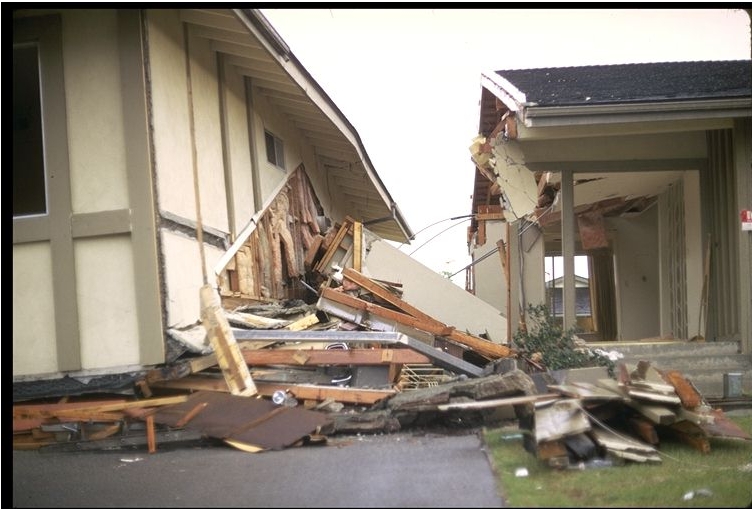Steel Column Retrofits
What is a soft story? How are they retrofitted? What is a moment frame and what is a moment column? How are they installed to protect homes with soft stories and how do they work? Find the answers to all these questions in this video.
After an earthquake, government statistics show 155,000 housing units will become uninhabitable and 350,000 people will be displaced. Many of them will be buildings and homes with soft stories. Many of these damaged buildings will be in Oakland and Berkeley, but soft story buildings can be found all over the Bay Area, including ordinary single-family homes. If for some reason you don’t think this is something you need to worry about, just look at what geologists say about the probability of a devastating earthquake in the Bay Area.
What is a Soft Story Home or Building?

GARAGES ARE A COMMON SOFT STORY CONDITIONS BECUSAUSE THE FRONT OF THE ROOF IS NOT CONNECTED TO A FOUNDATION; WINDOWS AND DOORS CAN CREATE THE SAME CONDITION BECAUSE THE FLOOR ABOVE THEM IS NOT CONNECTED TO A FOUNDATION.
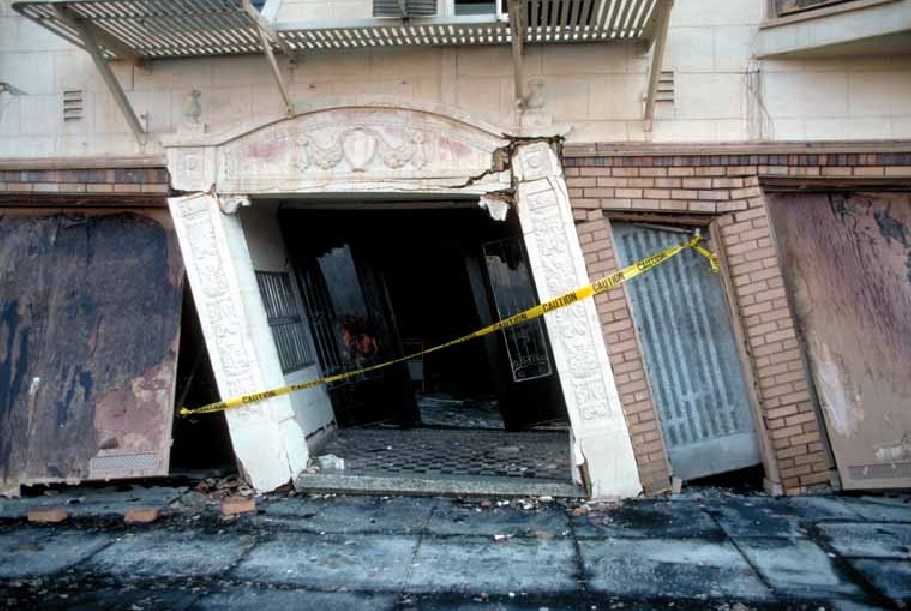
THIS DOORWAY IS LEANING BECAUSE THE FLOOR ABOVE THE OPENING DID NOT HAVE ANY FOUNDATION TO BE ATTACHED TO.

THIS IS THE KIND OF DAMAGE SEEN IN RESIDENTIAL NEIGHBORHOODS AFTER AN EARTHQUAKE.
These photos illustrate how garages with living area above the garage collapse. Imagine if there had been many thousands of pounds of living area above the blue garage instead of this very light roof. The same kind of damage occurs whether it is a 40-unit apartment building or a simple house. Soft story retrofits prevent this.
Walls with large windows and garage door openings create a soft story building because they are much more flexible and easily shaken apart than the rest of the building, to say this another way the lower story softer than the living area above. Imagine your house or apartment building swaying back and forth on top of glass windows or garage door openings. They cannot resist this movement. Peter Yanev, a San Francisco Bay Area structural engineer made this excellent video that shows how soft story buildings can be protected.
Even Newer Homes need Soft Story Retrofits
This house was built before July 1, 1999, when it became illegal to brace garage door openings like this one, which attached the floor above the garage door opening to the foundation narrow walls on either side of the garage door opening. The 1994 Northridge Earthquake proved that walls this narrow act like posts and tend to tend to tip over. All soft story houses built after July 1999, must have shear walls on either side of the garage at least four feet wide or use narrow specially made steel shear walls.

THIS HOME WAS BUILT BEFORE THE 1994 NORTHRIDGE EARTHQUAKE CHANGED THE BUILDING CODE REGARDING SOFT STORY RETROFITS IN JULY OF 1999.

THIS SOFT STORY HOME IN SAN FERNANDO WAS DAMAGED BECAUSE THE LIVING AREA ABOVE THE GARAGE WAS NOT ATTACHED TO FOUNDATION AT THE FRONT.
Here is a soft story collapse to a newer home in San Fernando. Here you can see how the connection between the living area above the garage and the main house was not sufficient to keep the supports on either side of the garage from tipping over. This caused the garage to become separated from the main part of the house when the supports on either side of the garage door collapsed.
MOMENT COLUMNS
Moment Columns for homes require a large steel column be embedded in concrete and attached to the floor above. This is done by digging a trench near the garage door opening, placing steel known as rebar in the trench, attaching the bottom of the steel column to the rebar, filling the trench with concrete, and finally attaching the floor above the garage to the column.


Trench and Rebar Attached to Steel Column

Trench Filled with Concrete

ATTACHMENT TO FLOOR
When the floor above the garage door opening sways left to right this motion is transferred into the steel column and into the foundation.
Sometimes columns can be placed on the outside of a house and can be quite attractive.

Shear walls versus Columns
Shear walls are usually much cheaper to install and are often the best option, both in terms of strength and performance. A former research scientist with the American Plywood Association told me it was a bad idea to mix steel with wood because of the stiffness differentia. In other words, the two materials will react to an earthquake differently which can put the retrofit out of balance. This makes a lot of sense to me, so I would say use shear walls if possible.
Moment Columns, Strong Walls, And Moment Frames
For many years garage door openings could be braced with shear walls that were only 18″ wide. The Northridge Earthquake revealed that these shear walls acted like posts and tipped over. The building code therefore changed in the 1997 Uniform Building Code such that walls on either side of a garage had to be a minimum of 4′ wide rather than the 18″ previously allowed.
Sometimes builders did not want this 4′ wide wall on either side of the garage because it meant he had to build an even bigger garage with its added expensive.

THIS IS FROM THE CATALOG COLUMN MANUFACTURER’S CATALOG. THESE ARE USED WHEN THERE IS MINIMAL WIDTH OF THE WALLS ON EITHER SIDE OF THE GARAGE. THE NUMBERS ON THE LEFT REPRESENT THE AMOUNT OF EARTHQUAKE FORCE THEY CAN RESIST RATED IN POUNDS OF FORCE.
For example, the AX can resist 3,400 pounds. These are effective but the cost in materials and amount of labor it takes to install them is at least double of that required for a StrongWall discussed below.
Let’s say a builder wants the walls on either side of the garage to be only be 12″ wide. He can’t building a standard shear wall because the building code tells him it must be 4′ wide. In order to fill this need engineers started designing moment columns and manufacturers started selling StrongWalls that are very narrow and still resist very strong earthquake forces.
Strong Walls

This is another option called a Strong Wall. This table is from the manufacturer’s catalog.
The first column in this table under “Model No.” tells us the width and height of the strong wall. For example, SSW24x7 means the strong wall is 24″ wide and 7 feet tall. The numbers boxed in with red tells us how much earthquake force they can resist. For example, the SSW21x7 can resist 4200 lbs of earthquake force, the SSW24x7 can resist 5,405 lbs (800 lbs more than the AX steel column) of earthquake force. A SSW12x7 can resist 955lbs.

HERE WE HAVE A DRAWING OF TWO STRONGWALLS BACK TO BACK FOR DOUBLE CAPACITY
One of the best things about the strong walls is that you can put two of them next to each other back to back. This is called a “Double Strong Wall”. If we install two SSW24x7s back to back we will be able to resist 10,990lbs of earthquake force and two men can lift them and put them in place. This greatly reduces the labor expense. Notice how the Double Shear Wall resistance of 10,990lbs can resist almost as much as the strongest moment column. It should be obvious why these are usually the best choice.

HERE IS A FULLY ASSEMBLED STRONGWALL

HERE IS A STRONGWALL BEFORE THE CONCRETE WORK. NOTICE THE HOLE AT THE BOTTOM OF THE STRONG WALL WITH STEEL RODS IN IT. THIS WILL BE FILLED WITH CONCRETE
The Unique Buildings in San Francisco
This gray house is a typical soft story home or small apartment building in San Francisco. The front of the house directly above the garage door opening has nothing underneath it to prevent it from swaying back and forth parallel to the street. If it sways far enough it will collapse because the existing small posts on either side of the garage door will simply tip over. In this home it is not only the garage that creates a soft story condition. Underneath the remaining front of the house, you will not find a foundation or wall to support the floor except a few posts.
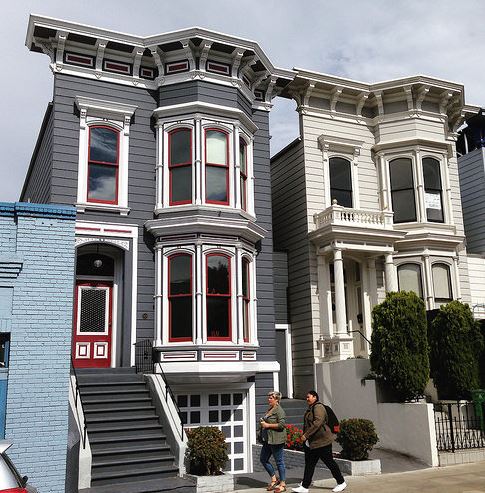
TYPICAL SOFT STORY HOME IN SAN FRANCISCO.
San Francisco Retrofit Methods
Below you will see two possible options for retrofitting one of these buildings. The illustration below is typical for soft story buildings in San Francisco such as the one pictured above. One option is to put a foundation under the front of the house and build high-capacity shear walls on either side of this foundation. High-capacity shear walls enable one to use a minimal length of foundation and get twice as much strength than if one had plywood and bolts on only one side. These shear walls are then attached to the floor above to keep it from swaying. The other method uses a large steel column in the garage door opening such that when the floor moves left to right it pushes and pulls on the steel column.
Steel columns as more expensive than double sided shear walls.

Image 1
Many people think a garage door opening defines a soft story hazard. Any openings, whether they be a garage door opening, a window, or a door disconnects the floor above from the foundation and can create a soft story hazard. Oftentimes the back wall has enough windows and doors to create a hazard almost as serious as that created by the garage door opening.

Image 2
A soft story failure in Santa Cruz
This house could have been saved if it had a soft story rotation retrofit.

This was a common failure in the 1989 Loma Prieta Earthquake. A major contributing factor is the wood siding which does not have nearly as much resistance as stucco.
Another Santa Cruz soft story failure
This is another example of where a retrofit would have saved the house. Notice how the glass is not even broken. This is because of the ability for sheet rock to resist earthquakes.

A similar soft story collapse. Again, a contributing factor was the wood siding.
SOFT STORY RETROFIT METHODS
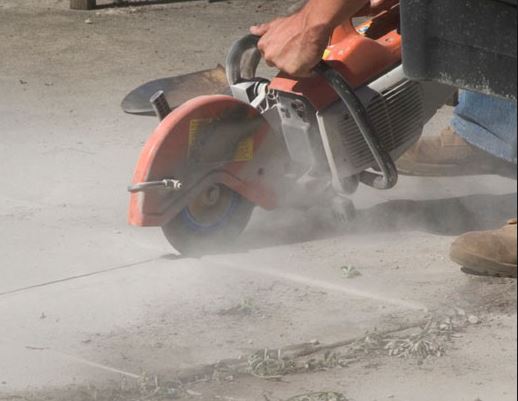
Steel goes into the concrete
Once the trench is dug out it is leveled so that there is no more than a 10% grade as required by the building code. The size of the trench, the amount of steel used, and the amount of force it will need to resist are all determined by a structural engineer. Here you see a technician working on a moment column foundation for a large apartment building. These foundations are the same as those used in houses, except, they are much bigger. Notice how the steel has been connected to the steel column.

You can imagine how pleased you would be with yourself after building something so elaborate to save one more person’s life savings.

Concrete is then poured into the ditch.

Often, we find sewer lines, drains, or water pipes when we did the trench. One must be extremely careful not to cut the pipes

A special type of pipe wrapping must be used before the concrete is poured to provide a barrier between the concrete and the pipe to prevent a deteriorating chemical reaction.

The top of the column is finally attached to the floor. And this is how the entire system works. When the earthquake forces push or pulls on the floor joists the column is attached to this force is stopped by the column which provides a counter force.

Such a large mass of concrete will shrink- leaving an indentation in the floor. Reinforcing steel is then put into the indentation and filled with concrete.

The last bit of concrete fills in this indentation so that the garage floor can be driven over with no one realizing how much steel and how large a mass of concrete is under them.


USING ROTATION
This is another but lesser-known method of protecting homes needing soft story retrofits.
This article could never have been written without the insights and guidance provided by research scientist and engineer Ed Keith. He has spent over 44 years of researching seismic design and the use of shear walls to protect homes as a leading scientist with the American Plywood Association, the largest shear wall testing laboratory in the world. He recently retired and I am forever in his debt for all he taught me.
This is an advanced retrofit and unorthodox retrofit procedure. It is advised that you not only read the material, but also spend some time studying the images and the linked-to web pages. After that always consult a seismic retrofit professional. Soft story retrofits one like this are VERY tricky.
Using Shear Walls to address Garage Soft Story Conditions
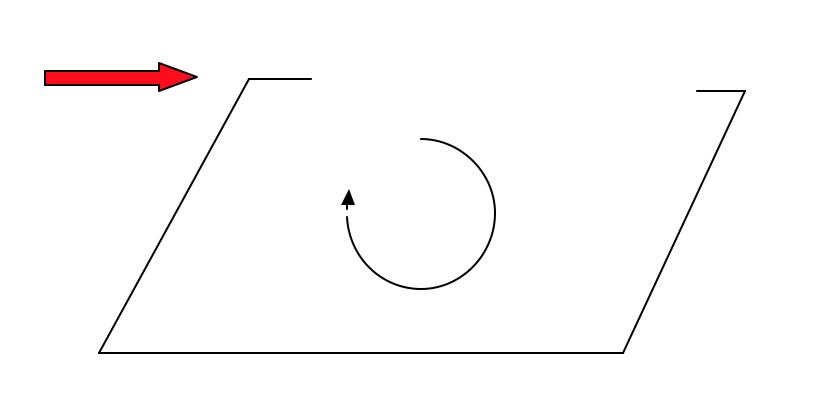
FIGURE REPRESENTING MOVEMENT OF FLOOR ABOVE A GARAGE BEFORE RETROFITTING.
If you install a shear wall on the back of the garage, and if the floor above the garage is more or less either a square or a rectangle, you can protect the building by putting shear walls on the back and two sides of the garage, without doing anything to the garage door opening itself. Using shear walls to protect a building like this is known as using the principle of rotation.

-
-
-
- The dark line on the perimeter represents the foundation, which is missing on wall line “D”.
-
-
-
- At the same time, it shows where the outside edges of the floor above the garage are.
-
- The red lines represent earthquake forces, which will attack the garage from all sides.
-
- The red arrow in the upper left is pushing down against a side wall of the garage. This movement is resisted by Shear Wall A.
-
-
-
- Another arrow in the upper right is pushing down against the opposite side wall of the garage. This movement is resisted by Shear Wall B.
-
-
-
-
-
- A third arrow in the lower left is pushing against the back wall of the garage on wall line “C”. This movement is resisted by Shear Wall C.
-
-
-
-
-
- The fourth arrow to the left of the garage door opening is pushing on the garage door opening but there is no shear wall or foundation here. What happens?
-
-
-
- This is where rotation can be seen. The entire floor tries to twist or rotate as shown by the rotating circular black arrow, pushing down on the wall B and up on wall A as it rotates. This rotation transfers all of the force that would have caused the garage door opening to collapse into to the back wall as well as the side walls of the garage.
Thus, saving the garage door opening from collapse
- This is where rotation can be seen. The entire floor tries to twist or rotate as shown by the rotating circular black arrow, pushing down on the wall B and up on wall A as it rotates. This rotation transfers all of the force that would have caused the garage door opening to collapse into to the back wall as well as the side walls of the garage.
Multi-Unit Soft Story Retrofits
The collapse of the Northridge Meadows apartment building in the 1994 Northridge earthquake caused many of the inhabitants of the living areas adjacent to the parking to be crushed to death. Altogether 16 people died. Here you see both a front view and a rear view of this building. The exact same thing can happen in the San Francisco Bay Area if steps are not taken to protect the public.

Collapse of Northridge Meadows soft story apartment building that left 16 people dead.
San Francisco’s Mandatory Retrofit Program
The mandatory soft story retrofit program in San Francisco will go a long way in preventing this from happening. If you own a soft story building, think how you would feel if your building collapsed with the same fatal consequences?

 This soft story failure occurred in the Northridge Earthquake due to parking under the main floor. This is often called “tuck under” parking.
This soft story failure occurred in the Northridge Earthquake due to parking under the main floor. This is often called “tuck under” parking.San Francisco Soft Story Failure
This damage occurred in the 1989 Loma Prieta earthquake, which devastated part of San Francisco. Look carefully at the garage door openings on either side of the entrance way and notice they are leaning to the left. This is because they could not remain upright when the three stories they supported started swaying left and right. The tenants of this building were forced to re-locate and temporary shoring was immediately installed so an aftershock would not cause a collapse.

Soft Story Damage far away
This is a photo of damage to a soft story building that was 22 miles from the epicenter of the Northridge Earthquake. If the shaking had been more intense, or the building had been closer to the fault, it would have collapsed. If it had been a much heavier three-story building, such as those found in San Francisco, it would certainly have collapsed.
Why Soft Story Damage?
The cause of all this damage is always the same: too much weight is being supported by a limited amount of wall bracing. The building code does not recognize walls less than 27 inches wide as having any earthquake resisting value. In most soft story buildings, such as the ones shown here, the fronts were supported by nothing but posts. Buildings like this can be found all over San Francisco, a terrible disaster waiting to happen.

Possible Soft Story Devastation
Another soft story apartment building being torn down after the 1989 Loma Prieta Earthquake. As stated earlier, it is expected that over 360,000 people will be displaced after the earthquake and thousands of people will be killed. There will also be untold injuries.
Most of this will be due to the upper stories collapsing onto the lower stories where many buildings in San Francisco have apartment units. This is what happened to the Northridge Meadows apartment building mentioned above.
It will take years to re-build the Bay Area after such a catastrophe and impossible to rebuild these historic structures that give San Francisco so much of its character.

Large moment frames are an excellent way to protect apartment buildings. Courtesy Nilgun Wolpe, C.E.
Moment Frames for Large Buildings
These are the kinds of moment frames used in very large, heavy buildings. A series of these frames were installed in a row of garage door openings of a large apartment building.

Seismic retrofit contractors address soft story buildings in a couple of ways. If the walls on either side of the garage are wide enough, you can build standard shear walls. If the walls are too narrow, some hardware companies have invented super shear walls that can be much narrower. Another approach is to use a principle called rotation where shear walls are built on the back and two sides of the garage. Sometimes a custom-made large vertical steel beam is embedded in concrete and attached to the floor above. All of these methods work. It is up to the seismic retrofit contractor to figure out which is the best approach.
We Have Found This System to Be the Best.
Bay Area Retrofit- as a rule- installs vertical column systems.
A new possibility is a column system that has a fuse which breaks before the column itself is damaged. Without a fuse, a column can only be used one time and then replaced at great expense. These columns can be used earthquake after earthquake. The patent is pending but from what we can see, it will be the best system of all.
